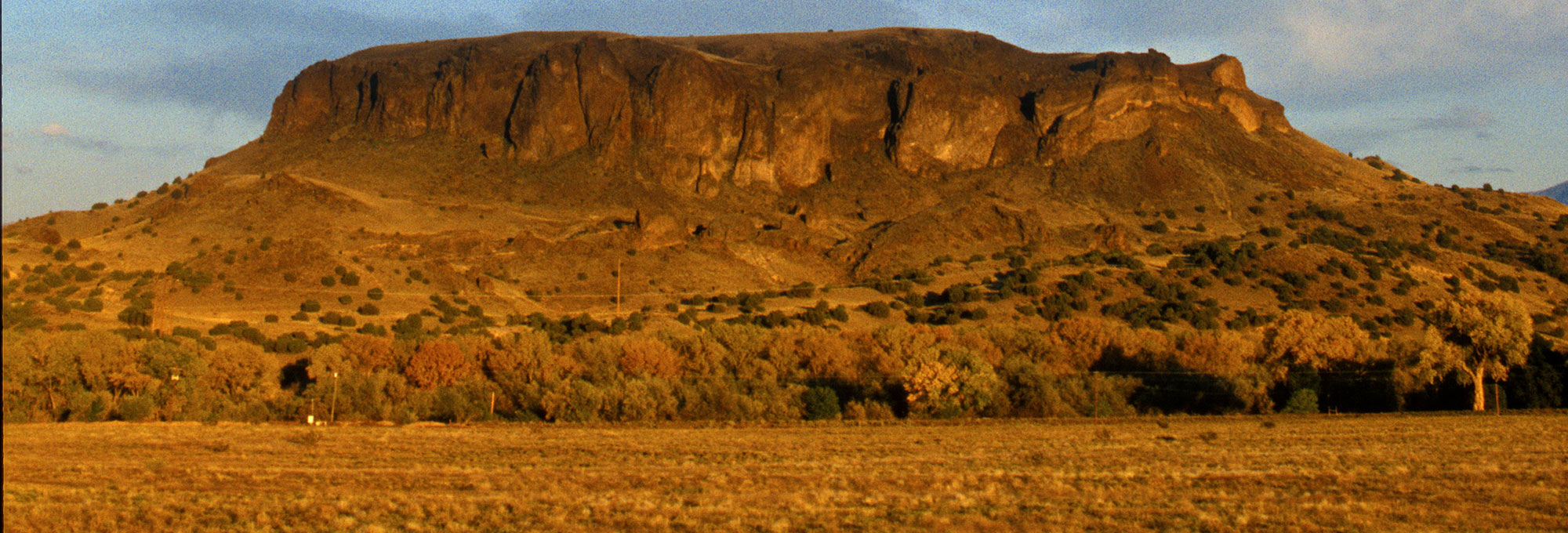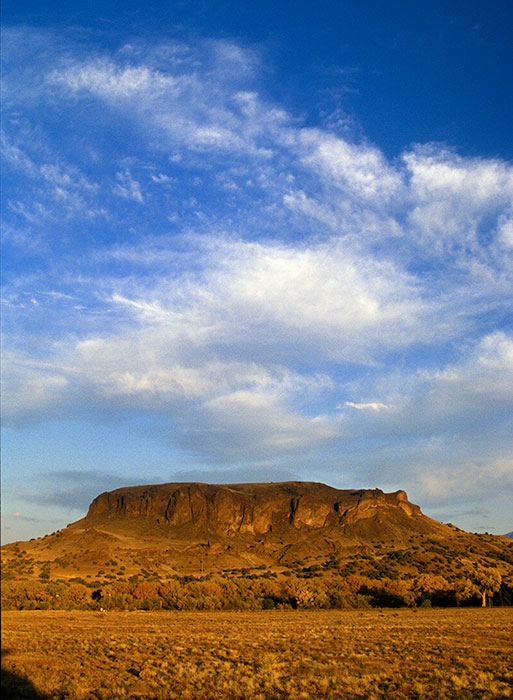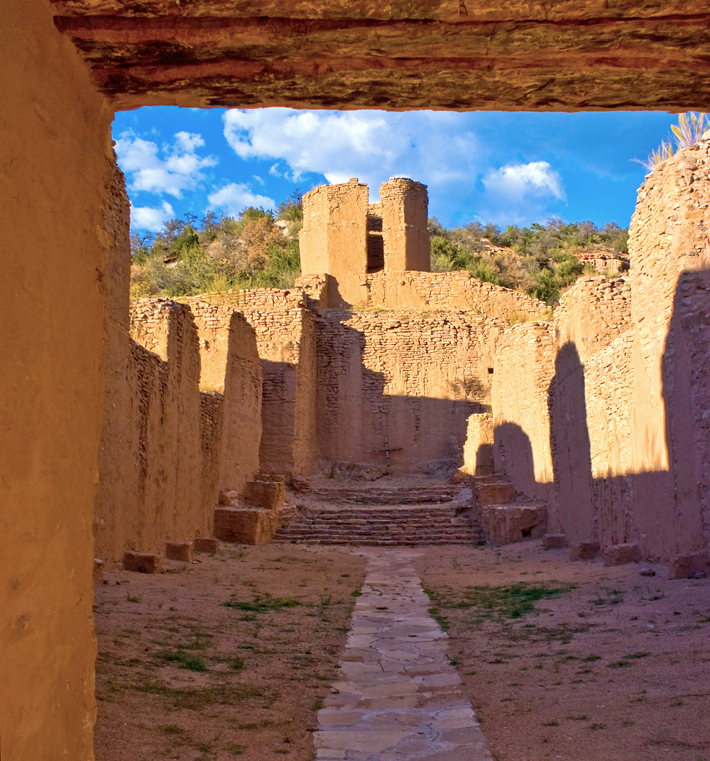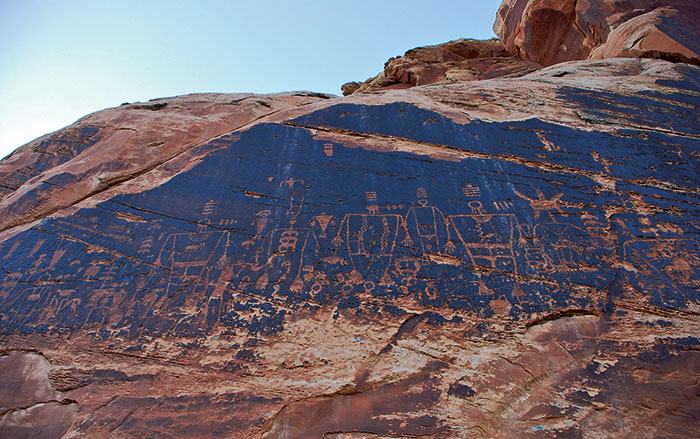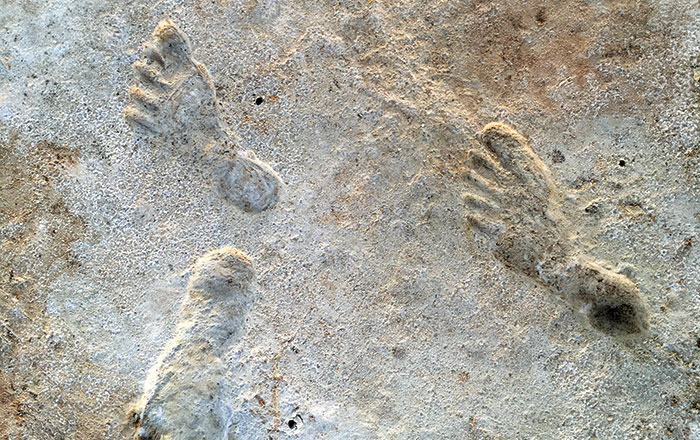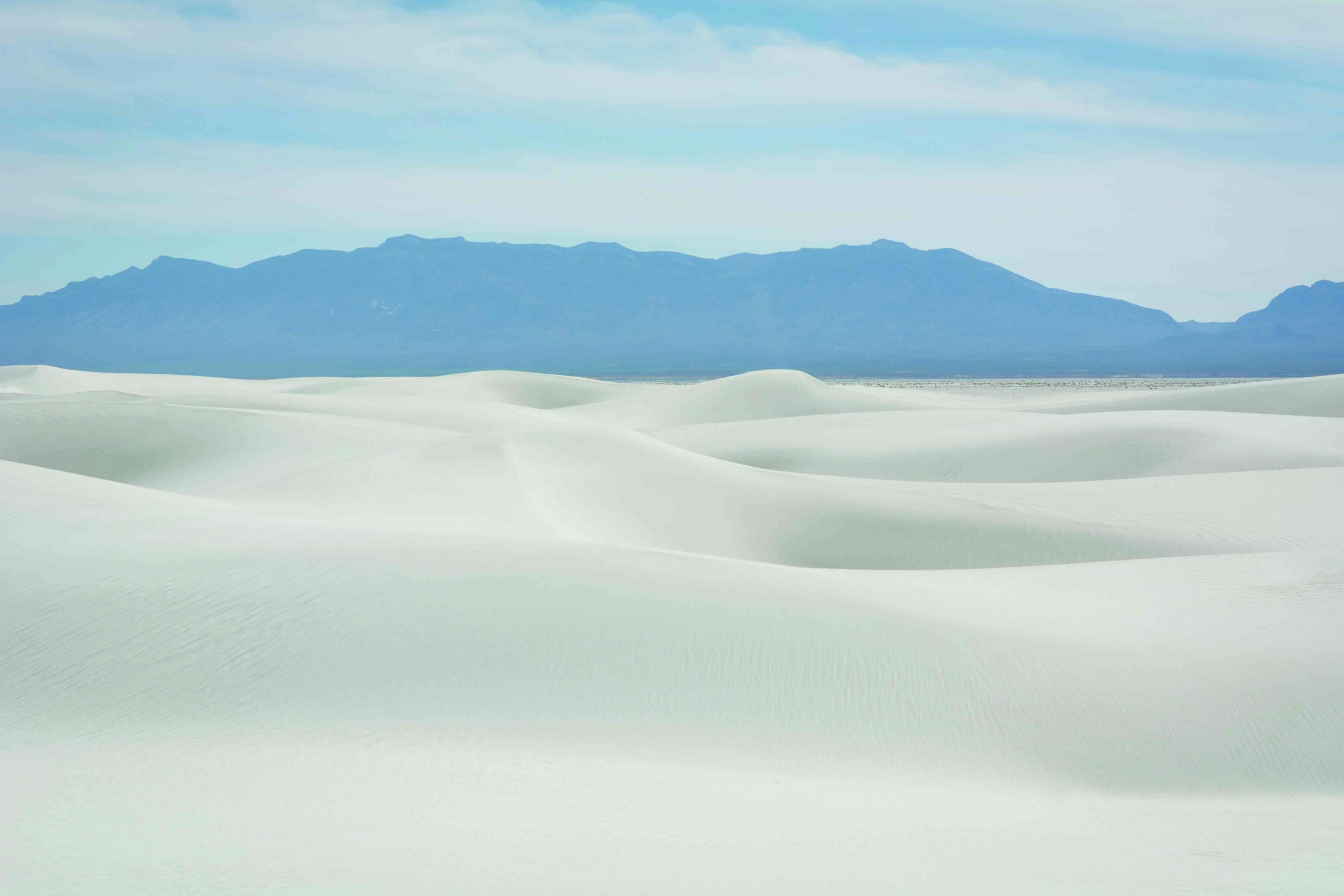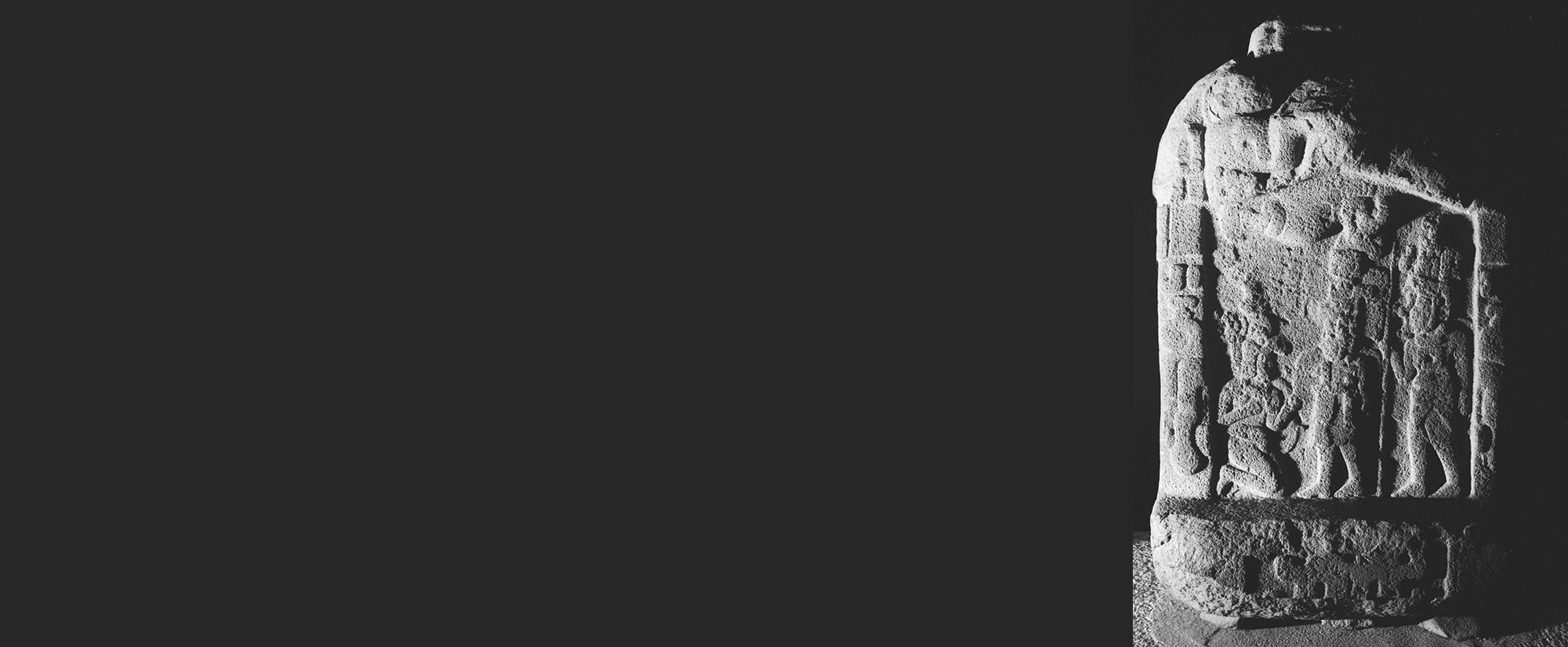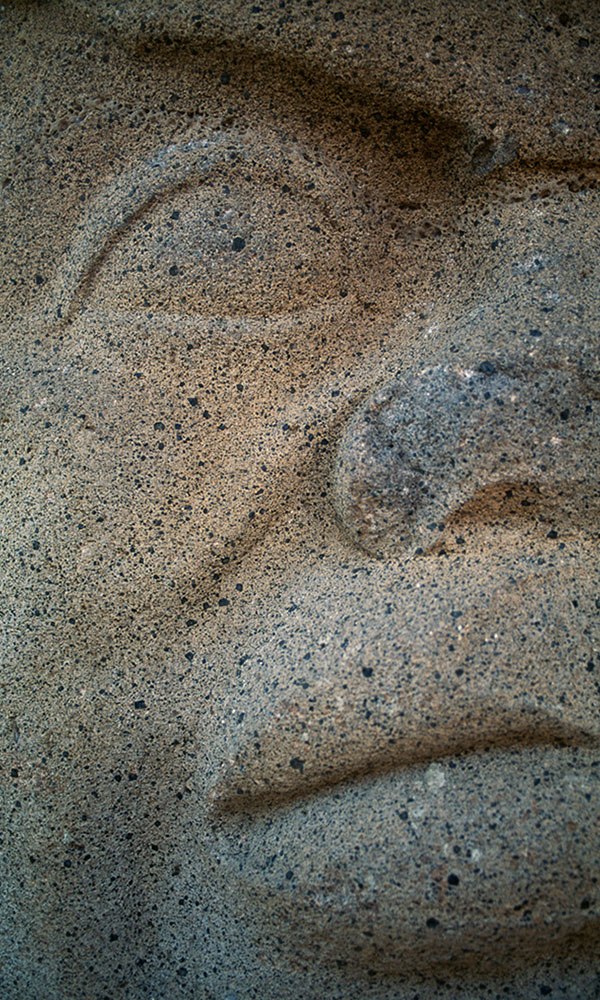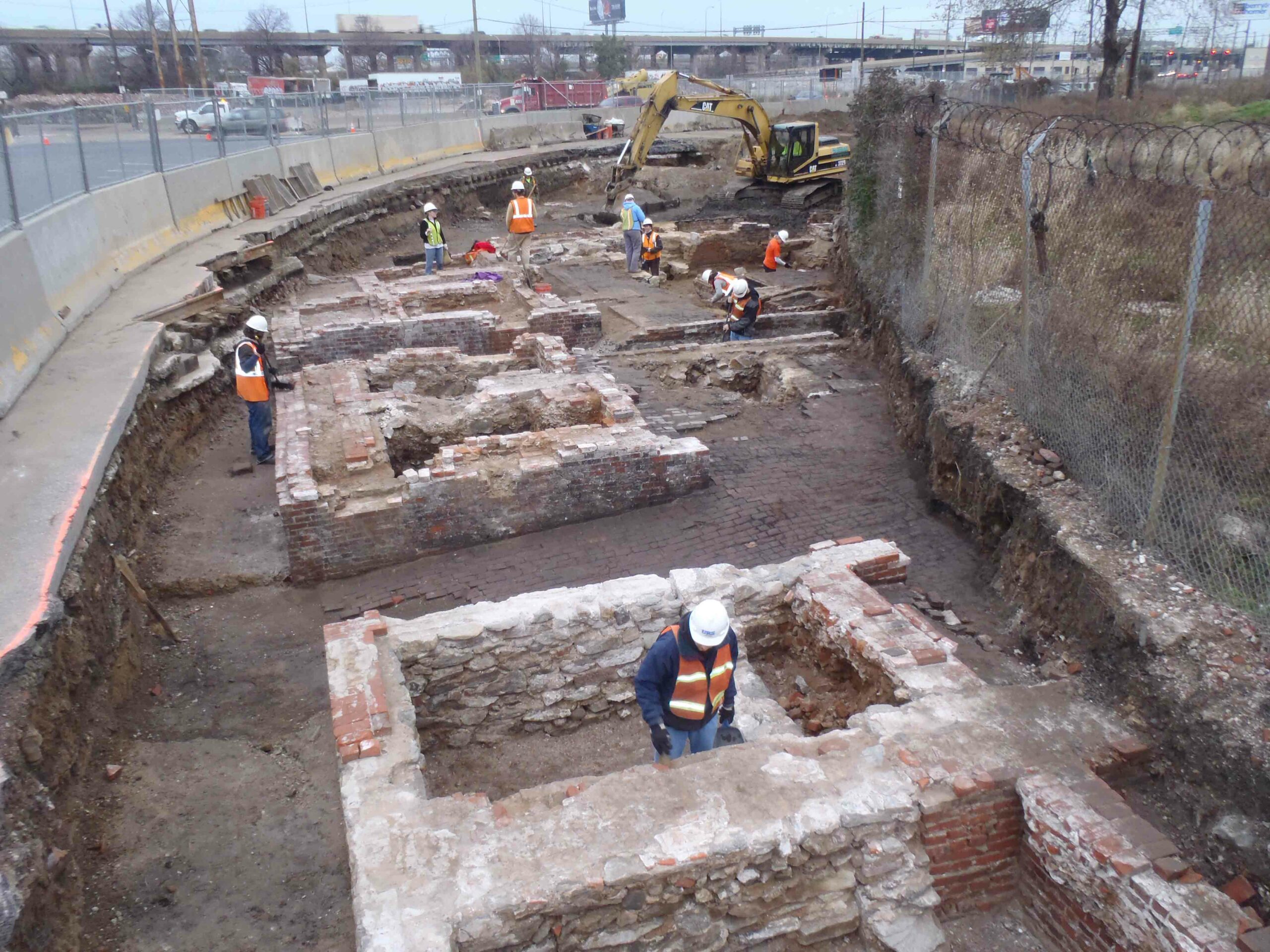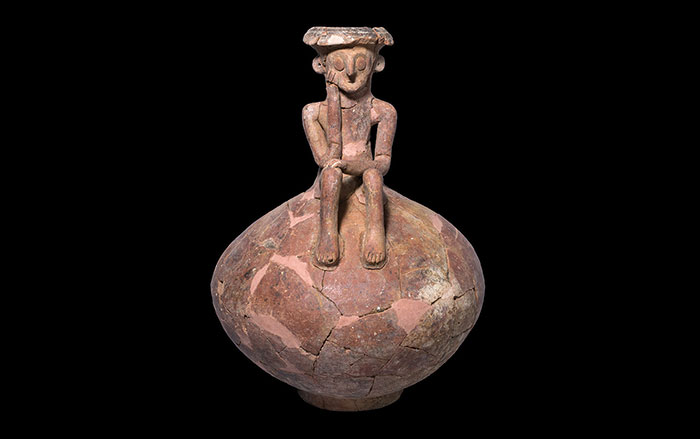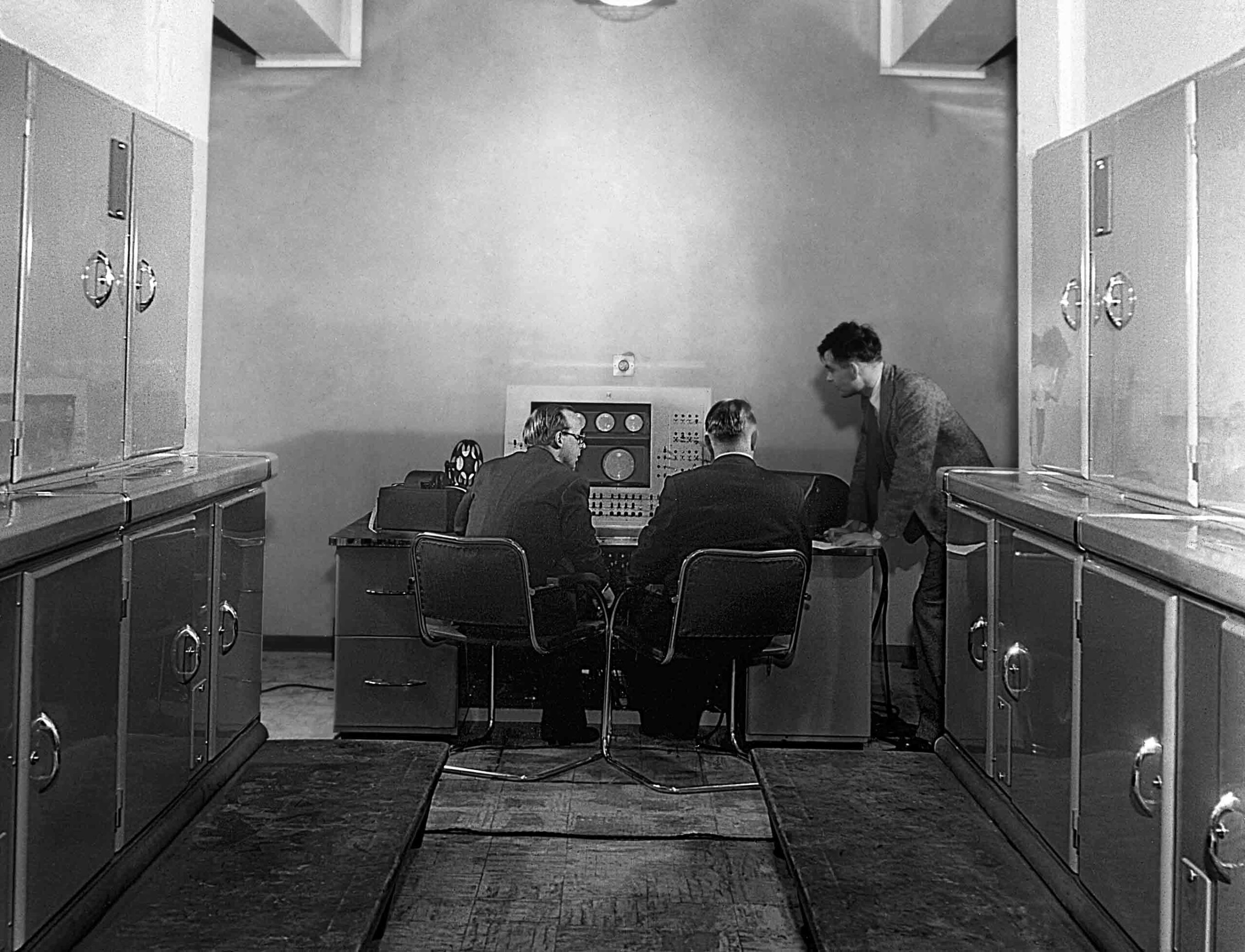An isolated volcanic outcropping, Black Mesa rises high above the floodplain of northern New Mexico’s Rio Grande Valley. The land it’s on belongs to the people of San Ildefonso Pueblo, whose ancestors have farmed near the base of the mesa since at least A.D. 1300. A natural fortress, Black Mesa was the scene of dramatic events in 1694, when Pueblo warriors encamped on its summit withstood a months-long Spanish siege. That conflict was the culmination of what is known today as the Pueblo Revolt, an indigenous uprising that began on August 10, 1680. On that date, Pueblo warriors from 19 separate villages carried out a coordinated attack on Spanish missionaries and colonists across New Mexico. Within a few days, they had driven virtually all Spaniards out of the province. For the next decade, apart from occasional Spanish military expeditions, the Native American peoples of New Mexico enjoyed total independence. “The Revolt period is still so important to Pueblo identity,” says University of Pennsylvania archaeologist Joseph Aguilar, a member of San Ildefonso Pueblo. “In many ways it shaped the world we live in today.”
Historians have relied primarily on Spanish accounts to understand the period, but recently, archaeologists have begun to uncover a richer picture of Pueblo life in the aftermath of what some scholars call the “first American revolution.” Working closely with Pueblo communities to study sites established after the Revolt, archaeologists have found evidence for tremendous change in Pueblo society as well as widespread revival of traditions that had been suppressed by the Spanish. A major focus of this recent research has been on defensive villages built on mesa tops during the 14 years of Pueblo independence. Aguilar is the latest archaeologist to explore one of these sites and is now working at Black Mesa, mapping the Revolt-era settlement there and seeking to understand the role the site played when Spanish forces eventually returned to New Mexico. “We’re finding the Spanish accounts don’t always match up with what we see on the ground,” says Aguilar. “The historical documents are an important resource, but archaeology can help give us the native perspective on what happened.”
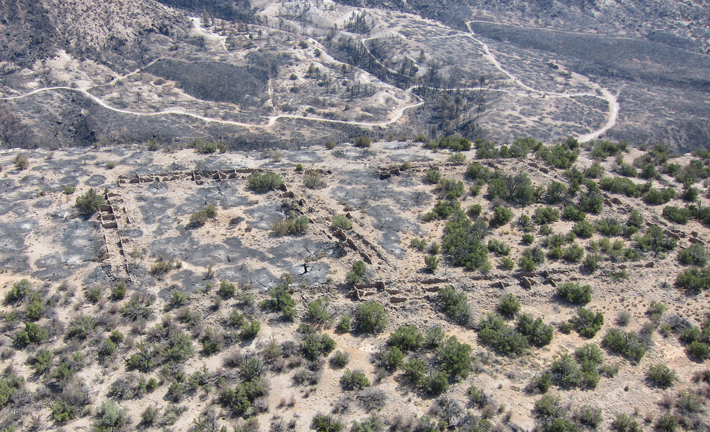
The Pueblo Revolt came after nearly 100 years of Spanish rule in the Southwest. Spaniards first colonized New Mexico in 1591, when a group led by Governor Juan de Oñate established settlements among the Pueblo farmers living in the northern Rio Grande Valley. The Pueblo peoples shared an agricultural way of life, but were linguistically and culturally diverse. They inhabited upward of 90 villages, known as pueblos.
In New Mexico, as they did elsewhere in the New World, Spanish authorities introduced the encomienda and repartimiento systems, in which Native Americans paid heavy taxes to the government and were obligated to work for Spanish colonists. Franciscan missionaries were among those who initially settled the province, and they cracked down on traditional religious practices, ordering the Pueblo people to build churches in their villages and installing bells that became a hated symbol of colonialism. Their presence was intended to impose a Spanish and Christian conception of time. In some cases natives were also forced into new villages that were organized into European-style grids, rather than the contiguous groupings of rooms known as room blocks of a traditional pueblo.
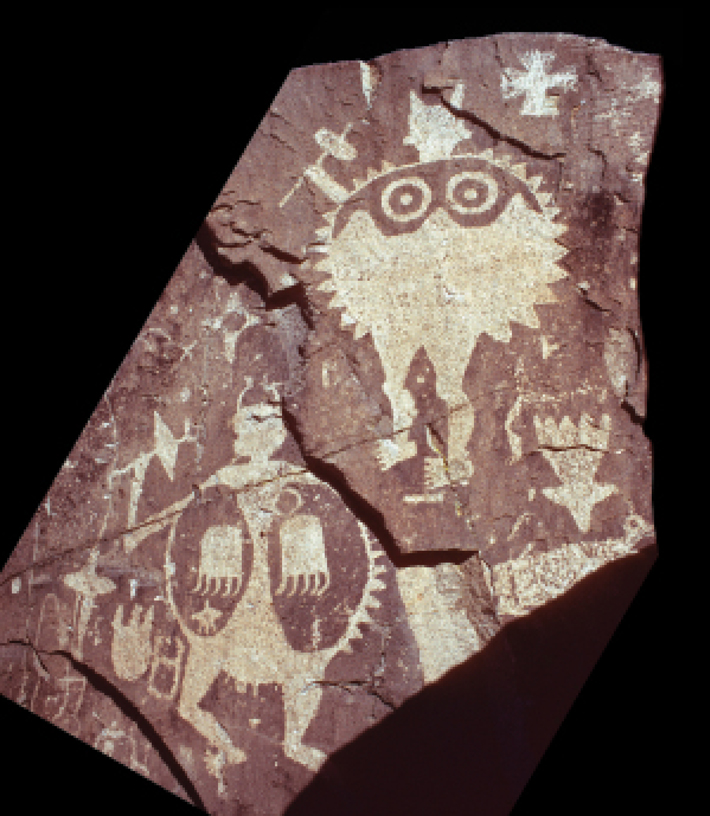
As the colony’s European population grew, the number of indigenous people began to decline, in part because of a series of epidemics and famines. Exact figures are hard to come by, but recent estimates put the native population of the Pueblo world at the onset of Spanish rule at around 100,000. By 1680, that number was down to 30,000, and the Spanish population stood at 4,000. Discontent grew among the Pueblo, and in 1678, a group of some 70 religious practitioners from a number of native villages went to the capital of Santa Fe to petition the governor to loosen restrictions. He reacted by jailing them all and hanging the leaders. Some committed suicide while in jail, though most were eventually released. One of those was a man known to history as Popé, an important leader from Ohkay Owingeh Pueblo. After his release, Popé fled to Taos, the northernmost Pueblo village, where he worked with other Pueblo leaders to plot a rebellion against the Spanish.
On Popé’s orders, messengers were sent out to all the Pueblo villages carrying cords with knots in them that were meant to count down the days until the uprising. When two of those messengers were caught south of Santa Fe and executed on August 9, 1680, Pueblo leaders decided to begin the rebellion ahead of schedule. Across the Pueblo world warriors attacked Spanish missions and ranches. In all, 21 priests and 401 Spanish settlers were killed. The survivors fled south to El Paso del Norte, today the Mexican city of Juárez.
During the next 12 years, the Pueblo world changed profoundly. Popé and other leaders tried to stamp out all vestiges of Spanish life, and urged people to return to their traditional ways. Many villages were abandoned, and there was a great deal of movement among communities. According to Spanish sources, violence broke out between those who supported the rebellion and native converts who remained loyal to the Catholic Church.
When a Spanish force returned to New Mexico temporarily in 1692, it did not encounter overt hostilities. The future governor of New Mexico, Diego de Vargas, made a tour of the Pueblo villages and reclaimed the province for the king of Spain before returning south to Mexico, an episode known as the “Bloodless Reconquest.” But when Vargas came back to New Mexico in 1694 with a larger army and a group of colonists, he found that many of the Pueblo living in new villages on defensible mesas still resisted Spanish rule, and the reconquest became anything but bloodless.
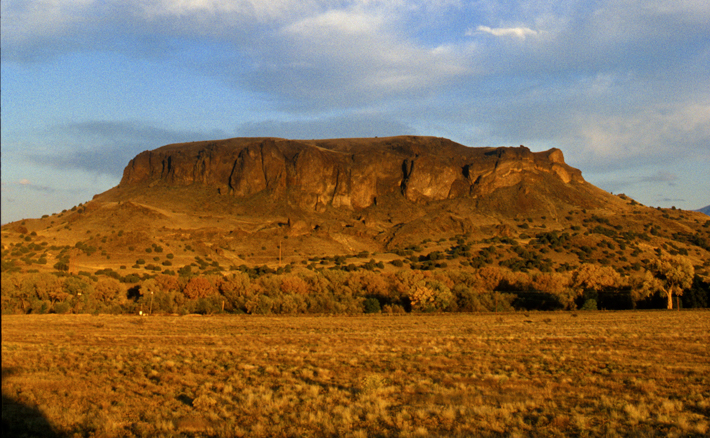
The first archaeologists to work in the Southwest in the late nineteenth and early twentieth centuries concentrated on the ruins of Spanish missions. “Those early archaeologists actually excavated a number of sites important to understanding the Pueblo Revolt,” says Brown University archaeologist Robert Preucel, “but they were more interested in prehistoric sites, and the Revolt was never an explicit focus of research.” That period remained the province of historians until the early 1990s, when greater cooperation between Native Americans and archaeologists made work at sensitive sites such as the mesa-top villages possible. At Zuni Pueblo in western New Mexico, University of Arizona archaeologist T.J. Ferguson was the first to apply modern archaeological techniques to a Pueblo Revolt–era site. With the permission of the Zuni, he surveyed a village on Dowa Yalanne, or “Corn Mountain,” a mesa on the Zuni reservation.
Before the Revolt, the Zuni were spread out among as many as six villages. Afterward, all the Zuni moved into newly constructed homes on Dowa Yalanne, which would have been nearly impregnable. Ferguson found that the arrangement of dwellings on the mesa top departed significantly from earlier villages. While those villages were typically made up of just a few room blocks, on Dowa Yalanne there were two large room blocks and multiple medium and small room blocks, likely to accommodate a number of groups occupying the mesa. While the different people lived in separate areas, Ferguson notes that the village was structured around open spaces that would have fostered communication among them. “This was a fundamental reorganization of their society,” says Ferguson. “They had to unify households, clans, and priesthoods, so social interaction was important.” Unlike other mesa-top villages constructed in the aftermath of the Pueblo Revolt, Dowa Yalanne was never besieged. Once the Spanish returned, the Zuni people moved off the mesa and occupied a single pre-Revolt village, now known as Zuni Pueblo.
Ferguson notes that each Pueblo group experienced the Revolt differently. At Zuni, the people treated the various sacred Christian objects such as chalices and bibles with respect. There is even a strong oral tradition that suggests they spared the life of the mission priest, known as Father Gray Robe. At least 18 versions of the story have been recorded, and it seems likely the priest was adopted into the tribe and lived out the rest of his days with the Zuni.
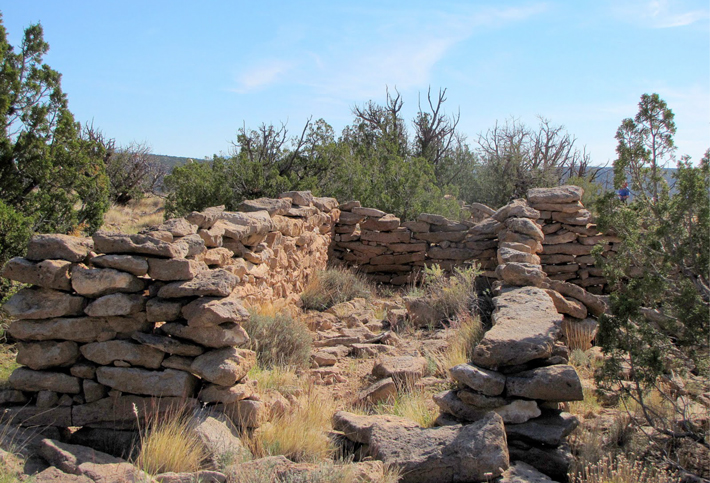
In 1996, Preucel began working with the people of Cochiti Pueblo, which is east of Zuni in the northern Rio Grande Valley. After the Revolt, their ancestors built a mesa-top village now known as Hanat Kotyiti, or “Old Cochiti.” Preucel believes the structure of the village shows they moved there not just for defensive purposes, but to help reimagine their way of life. “The Pueblo leaders were proselytizing in the aftermath of the Revolt, trying to convince people that after kicking out Spanish authority, they needed to live by the laws of the ancestors,” says Preucel. “So they left the mission villages, which were polluted, and built these mesa-top villages.” Hanat Kotyiti, with six-foot-high walls, was organized around two plazas with underground chambers known as kivas, an ancient arrangement with strong ties to the dual social structure that existed in many Pueblo societies before the arrival of the Spanish. Even today, Cochiti is organized into Pumpkin and Turquoise paternal lineages, known as moieties. Preucel believes the dual plaza arrangement at Hanat Kotyiti expressed a return to this ancient form of social organization and reflected the mythical White House, an ancestral Cochiti village where people and the spirits known as katsinam (singular katsina) lived together in harmony.
In addition to surveying the village’s architecture, Preucel and his colleagues studied pottery collected during early excavations of the site. Here, too, they found evidence of a return to ancient traditions. A double-headed key design element decorated much of the pottery collected from Hanat Kotyiti. This ancient motif, which is thought to represent harmony, may have been a strong visual signal of a return to tradition. New motifs and novel layouts of designs on other pottery may have signaled a break with the recent mission past. Preucel also found pottery made at pueblos farther north that historical sources maintain were at war with Cochiti during the Revolt era, suggesting there may have been close trading ties between the two groups, or that some of these other Pueblo may have even lived at Hanat Kotyiti. “In an extreme situation, people have to dig deep into larger social networks,” says Preucel. “You could even have people from different linguistic groups living there. We sometimes fixate on villages being discrete peoples, but in fact, especially during this period, villages were probably more diverse than we think.”
The experiment at Hanat Kotyiti came to a violent end. It was the first of the mesa-top villages to be seized by Vargas in 1694. After taking the village, Vargas set fire to stored corn, which destroyed the pueblo. “You can still see some rooms that are completely reddened by the flames,” says Preucel. A recent wildfire exposed sections of the site previously obscured by vegetation. Last summer, Preucel documented newly uncovered areas of the pueblo, including entryways that had been barricaded with stones. “That tells us they were likely trying to fortify it against the Spaniards during the final assault,” says Preucel. In addition to killing 21 warriors, the Spaniards captured 342. The fall of Hanat Kotyiti was the beginning of the bloody reconquest.
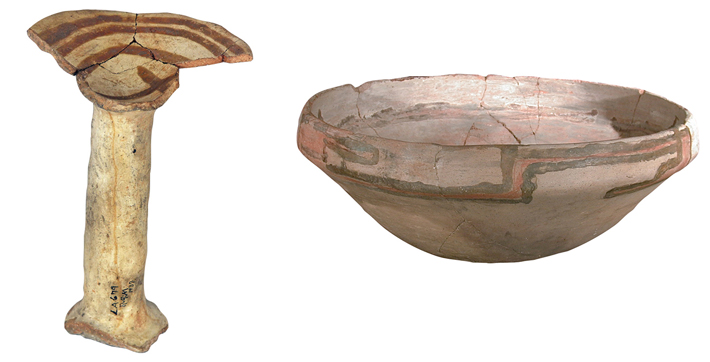
Some 30 miles west of Cochiti is today’s Jemez Pueblo, where Harvard archaeologist Matthew Liebmann has studied the remains of three Revolt-era villages. In contrast to the people of Zuni, the ancestors of today’s Jemez people not only killed their priest and destroyed the mission church, but also burned their entire village. “People often ask why they would burn their own homes,” says Liebmann. “The Jemez didn’t see it as their home; it was Spanish.” The Jemez people then built two new pueblos in the mountains west of the Rio Grande. In 2000, Liebmann began to work with the tribe to survey the sites and collect pottery from the surface.
Known as Patokwa and Boletsakwa, the Jemez pueblos show evidence of the same dual-plaza structure found at Hanat Kotyiti. “These iconic dual-plaza pueblos show they were leaving behind the Spanish forms and forging a continuity with a previous time,” says Liebmann. Under the Spanish, the Jemez were famed for their black-and-white pottery, and were commissioned to make chalices and other ecclesiastical objects. Perhaps because of this association, Liebmann found virtually no black-and-white pottery at the new sites. Instead, pottery with the double-headed key motif and other ancient designs predominated. The Jemez also began to use a simple red pottery that exploded in popularity among the Pueblo after the Revolt, perhaps signifying the formation of a pan-Pueblo identity that hadn’t existed before.
In 1693, after Vargas visited the pueblos and informed the people of the Spaniards’ imminent return, the Jemez left Patokwa and Boletsakwa and sought refuge on a higher mesa, where they built a village known as Astialakwa. Unlike its predecessors, the settlement had no overarching design. While Liebmann can discern three main units at the site, perhaps showing that the village was divided into two separate Jemez factions and a group of newcomers, the village consists of 190 haphazardly dispersed single-story rooms. “It evolved organically over an eight-month period,” says Liebmann. “What we see there is individual households building new homes. The revitalization movement had dissipated, and no single leader was directing overall construction.” By the time Vargas reached Astialakwa in 1694, there were 600 people living there.
As at Hanat Kotyiti, the village was unable to resist Spanish attack. In addition to burned plaster and charred material found throughout the site, chain mail and copper plating from Spanish armor provide physical evidence of a brutal battle that ended with 84 dead Pueblo warriors. After destroying the village, Vargas forced the Jemez to exhume the skeleton of the missionary killed during the uprising and then, perhaps most humiliating for the remaining warriors, ordered them to participate in the Spanish attack on Black Mesa, some 60 miles to the northeast.
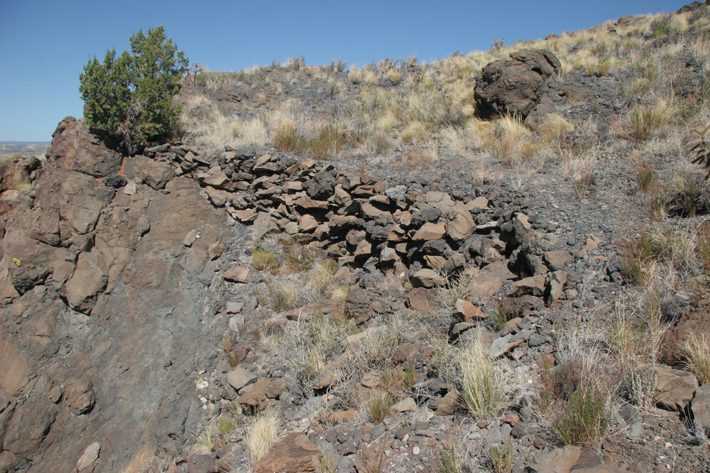
Like all present-day members of San Ildefonso Pueblo, Aguilar grew up hearing tales of Black Mesa. According to one story, a giant lived in a cave on the mesa, and children in the pueblo are still told that if they won't behave, the giant will come for them. Many of the stories have to do with the months-long seige endured by the warriors of San Ildefonso and several other pueblos there in 1694. The fact that there was a Revolt-era settlement on the mesa top was widely known to historians and archaeologists, but until Aguilar began working at the site in 2017, no one had studied it.
Initially, Aguilar made an exhaustive survey of the mesa top, eventually identifying at least 90 caches of rocks that the warriors used as missiles to repel Vargas’s soldiers. On the mesa top’s southern edge, he also documented the remains of defensive fortifications erected during the siege. The remains of the Revolt-era village are harder to analyze, since they are severely eroded. “It’s pretty different from the other mesa-top sites,” says Aguilar. “There you have regular architecture, but at Black Mesa, it looks like you don’t have room blocks, but shallow pits covered with some kind of temporary superstructure.” New 3-D maps of the site created during a drone survey may clarify the picture in the future, but for now Aguilar believes the settlement at Black Mesa may have been more of a temporary battlefield camp than a village. He notes that oral tradition maintains that the pueblo’s women and children didn’t take refuge at Black Mesa, but at an older site to the west of San Ildefonso known as Nake’muu. “Vargas doesn’t mention that in his journals,” says Aguilar. “But we have a strong tradition that that’s where they went.”
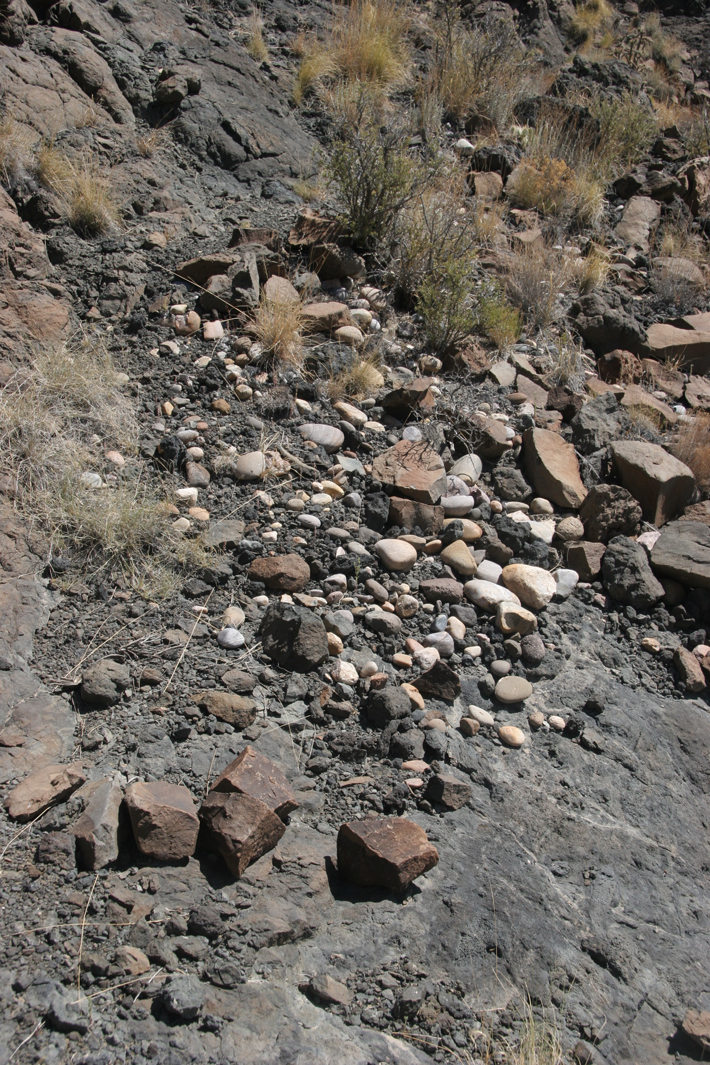
According to the account left by Vargas in his journals, there were as many as 2,000 warriors on Black Mesa, but, after studying the site, Aguilar thinks that may have been an exaggeration. Vargas also maintained that he reached the summit of the mesa, but according to Aguilar, his description doesn’t match the defensive alignments or the topography. “I read that and I think, ‘Come on, Vargas, there’s no way you made it to the summit.’” The Spanish governor may have had reason to exaggerate his feats, because, while he captured the other sites, he did not succeed at Black Mesa. In September of 1694, after months of protracted siege, the warriors came down from Black Mesa. “Vargas would say they surrendered, but I don’t think of it that way,” says Aguilar. “They came down on their own terms, after long negotiations.”
Today, it’s tempting to romanticize the rebellion as a noble failure, but Aguilar and others point out that the Pueblo Revolt had a tremendous impact. The threat of possible future revolts meant that the encomienda and repartimiento systems were never reinstated and the Spanish were forced to tolerate native religious practices. “I always wonder how the Pueblo would live today if there had been no Revolt,” says Aguilar. “It’s a scary thought, because if those colonial practices had played out over the course of another century, there’s no telling what the state of my pueblo would be. We are living where we are and we are the people we are thanks in part to the Revolt.”


